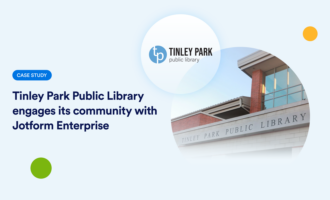3 ways to improve customer service
- Start with data
- Create easy interfaces
- Constant improvement
The customer service experience is largely thought of as a concern of private businesses only. Companies have specific departments that deal with customer requests, technical support, and other consumer issues to ensure a positive experience with their brands.
But these should also be fundamental considerations for customer service in the public sector. Government offices deliver a set of essential services, and taxpayers often have to deal with the same technical or financial issues they face with businesses.
From filing taxes and unemployment claims to getting healthcare information and Social Security benefits, people expect quick, responsive, and helpful service in managing some of the most vital aspects of their lives — and they’re often left wanting.
Thankfully, there’s a movement afoot in government to expand the role of customer service in the public sector and make people’s lives easier. To understand how to improve the customer experience in your own public service, let’s take a look at some of the changes we’re seeing at the federal level as well as tips on how to implement those changes to make substantial, impactful improvements.
Taking a look at customer service in the public sector
After a consistent drop in citizen satisfaction with government services since 2017, in 2021 the Biden administration announced a commitment to improving the field with executive orders. In particular, an order from late 2021 promises to push government service leaders to directly improve and expand their individual customer service platforms.
The main goal of this effort is to ensure more equitable access to fundamental financial benefits for lower-income groups, who tend to face major technical and bureaucratic obstacles in getting those funds.
Though it’s a step in the right direction, the public sector continues to falter when it comes to providing support. From infamously long wait times at the DMV to complications with digitized systems like Veterans Affairs and HealthCare.gov, many consider “government service” an oxymoron.
Beneath those shared sentiments, though, are some fundamental truths to consider if you want to learn how to improve service delivery.
At the core of it, the public sector suffers from outdated technology, insufficient data collection, and poor communication between departments as the main roadblocks to providing better service. These issues tend to result in greater strain on agencies themselves, as taxpayers must call more frequently for assistance, and those calls impact budgets and resources.
By understanding what gets in the way of making improvements, public service organizations can better tackle the problems plaguing their constituents. Here are a few examples of tangible changes to customer service proven to improve the experience.
Improving customer service in the public sector
Start with data
Government agencies often fail to use vital data in creating processes and customer interactions. On a basic level, agencies need to collect, store, and analyze data on a widespread and easily accessible system so civil servants can tap into it all at once.
With a comprehensive system, government service organizations will have a much clearer picture of constituents’ experiences, the common needs they’ll face, and the most readily available solutions that services can provide.
Beyond that, more accurate information reveals insights into the client’s journey and, more importantly, how to refine it. If data from a tax filing service reveals certain income levels or age groups are filing later than others, for example, this insight can guide the service to discover that it’s releasing a certain necessary filing document too late or that the document is causing logjams.
By working backward, the organization can help streamline the process and improve the end-to-end experience.
Create easy interfaces
Both internally and externally, smooth interfaces are the foundation of a clean user experience (UX). Designing technology that’s easily accessible and modular makes it easier for civil employees to retrieve information and track customer data. Better design provides tremendous help in maintaining a consistent and rapid flow of information to improve the customer experience.
More importantly, citizens accessing the interfaces should be able to easily navigate the services they need to access. Poor site design for online users or complicated phone menus create hiccups and damage the clients’ trust in the service. Investing in UX and improving access on both sides of the system create a better working environment for all involved.
Constant improvement
In the same spirit as the data-driven approach we mention above, government services have a responsibility to constantly improve when they get new information.
The data you get from customers isn’t just a way to serve them immediately — you can leverage it further to root out problems in your operations and roadblocks in service or even to identify more successful processes and replicate them elsewhere.
Using Jotform to improve customer service in the public sector
When you’re searching for the right system to help your public sector service run better, look for software that’s built for larger-scale operations and provides the necessary accessibility and security your organization needs. Jotform Enterprise gives employees the ability to tap into a fully functional form-building service to collect and collate important customer data all in one location.
Jotform Enterprise helps users easily build workflows based on forms, helping automate different customer service experiences and close them out more efficiently. With a local data residency center and localized storage for your data, you can trust that information is readily available and accessible at all times. To cap it off, enterprise-level security protects information and your service from external hacks to ensure you can safely collect and use sensitive citizen information.
The long relationship between government services and their clients is fraught with horror stories and cheap jokes.
Historically poor customer service creates friction with constituents, but solutions are more readily available than ever to help you create a greater atmosphere of trust. Using the right technology and a data-driven focus, you can delight your customers and provide a truly helpful, essential service and a positive experience.
Photo by Ivan Samkov




























Send Comment: